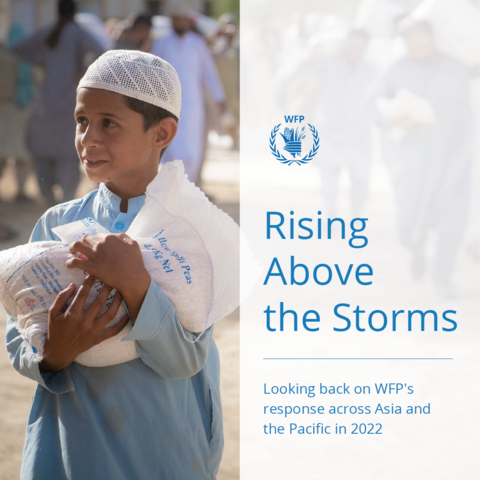
In 2022, unparalleled challenges drove a surge in hunger. New crises mounted on top of existing ones, further pressing down on the backs of people already suffering from poverty, hunger, and malnutrition. In Asia and the Pacific, the year ended with 69.1 million acutely food-insecure people, a significant increase from the 62.2 million people reported in 2021. This was driven by a horde of factors, including the global food crisis, an onslaught of extreme weather events, and political crises. These shocks further exposed structural inequalities - and disproportionately affected groups that were already vulnerable to food insecurity.
But WFP stepped up. Faced with an exceptional global food crisis and a new wave of threats, WFP stood firm in its commitment to combat hunger. Thanks to the support of its generous donors, WFP stepped up and scaled up, reaching over 37.4 million people in the Asia and the Pacific region with assistance in 2022. That's 12.6 million more than in 2021. WFP continued to do what it does best: leveraging its vast experience in delivering food, cash, and nutrition assistance in emergencies. This also meant drawing on its capacities in improving livelihoods, providing school meals, building resilience, bolstering national social protection systems, and augmenting logistics and emergency telecommunications. By doing so, WFP made sure it was present - right where it was needed.
Learn more at this interactive report.
